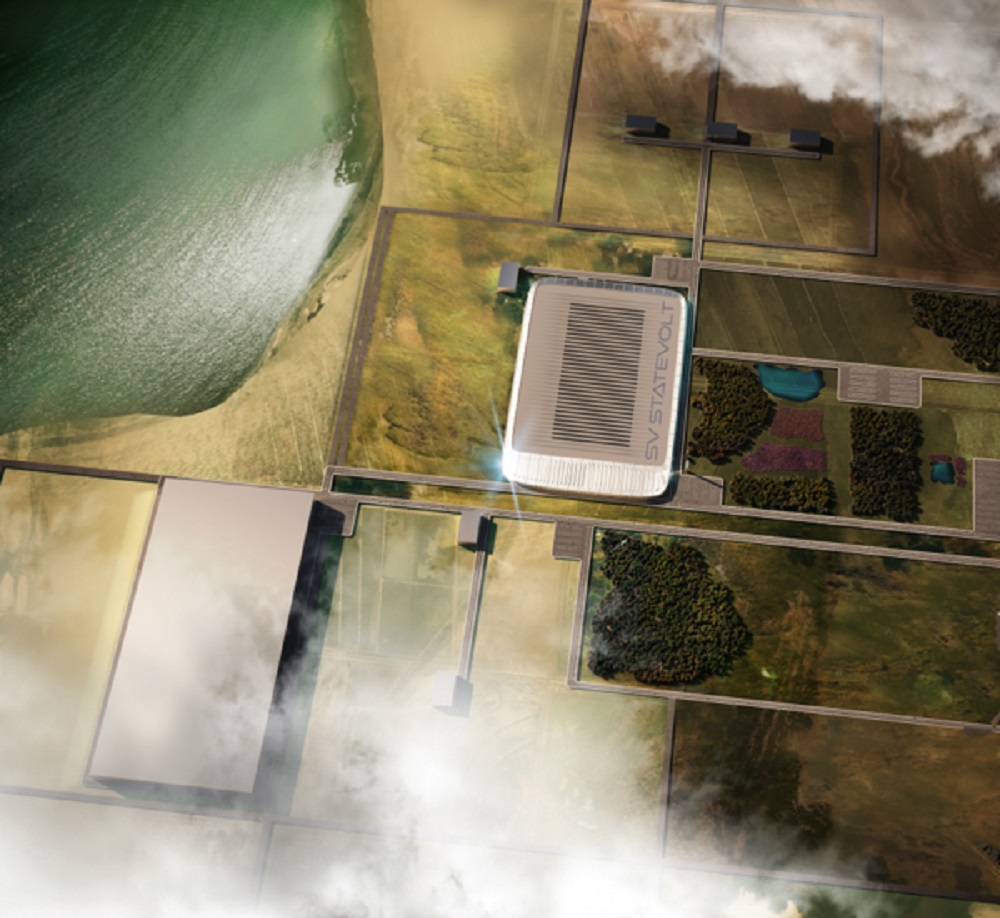Statevolt was launched by Lars Carlstrom, founder and CEO of Italvolt, which is building a 45 GWh battery factory in Italy and Britishvolt, which is building a 30 GWh battery factory in the UK. Statevolt announced last April that it intended for its 54 GWh U.S. Gigafactory to be one of the largest in North America.
At full operating capacity, the Gigafactory will be one of the largest in North America, with plans to produce batteries for 650,000 electric vehicles a year.
Motivated by the Inflation Reduction Act, Statevolt intends to manufacture batteries for electric vehicles (EVs) and storage applications and said it will source materials entirely in the U.S. Controlled Thermal Resources will supply lithium to the plant, which will be located near the Salton Sea—estimated to contain between 1 and 6 metric tons of lithium. A team from Lawrence Berkeley National Laboratory is leading a research project to profile the concentration of lithium in the geothermal field beneath California’s Salton Sea, and to explore the most environmentally benign way to extract it.
According to the Department of Energy, U.S. manufacturing of batteries for electric vehicles stood at 55 GWh/year in 2021 and is projected to grow to nearly 1,000 GWh/year by 2030, or enough to supply the manufacture of approximately 10 to 13 million EVs per year. Since the landmark Inflation Reduction Act passed in August, auto makers and battery companies, such as Statevolt, plan to spend $54 billion across 37 dedicated EV battery manufacturing facilities.
“The Inflation Reduction Act has opened up new opportunities and incentives for strategic sectors like ours, helping the U.S. establish itself as the global leader in clean energy solutions,” said Carlstrom.
Two key provisions of the IRA are boosting manufacturing in the US. The first, the advanced manufacturing production credits (AMPC), for US-made renewable equipment. The second provision is the incentivization of developers of US renewable energy projects to purchase domestically sourced equipment with an additional tax credit if they meet domestic content requirement or domestic content requirement thresholds. To qualify, 40% of all equipment must be American-made for projects installed before 2025.
Statevolt said it is committed to supporting growth and regeneration in the area, and it intends to provide employment for up to 2,500 people in the Imperial Valley community. The company’s business model will ensure its batteries are sourced and manufactured in a way that will support the Biden Administration’s ambition for clean growth and well-paid, high-quality jobs.
“The Statevolt project and its significant investment will be a monumental boost and rebirth for our local economy,” said Sean Wilcock, vice president of Imperial Valley Economic Development Corporation (IVEDC). “The diversity of occupations offered at this new facility will provide never seen before opportunities for all skill levels. Imperial Valley has been at the forefront of the green economy decades before anyone coined such a phrase, now we’re back again leading the nation in the clean transportation industry. We can’t thank Statevolt enough for their investment in Imperial Valley.”
Since announcing the launch of the project in April, with the assistance of IVEDC, the Statevolt team conducted an audit of potential sites, landing on the Salton Sea as a prime area for development. After acquiring the site, Statevolt has engaged AECOM Technology Corporation, a infrastructure consulting firm, to undertake due diligence including environmental and traffic analysis, ensuring that the planned site is suitably linked to strategic roads and highways for access.
Addendum: Britishvolt went into administration (bankruptcy) on Jan. 23, 2023.
This content is protected by copyright and may not be reused. If you want to cooperate with us and would like to reuse some of our content, please contact: editors@pv-magazine.com.









By submitting this form you agree to pv magazine using your data for the purposes of publishing your comment.
Your personal data will only be disclosed or otherwise transmitted to third parties for the purposes of spam filtering or if this is necessary for technical maintenance of the website. Any other transfer to third parties will not take place unless this is justified on the basis of applicable data protection regulations or if pv magazine is legally obliged to do so.
You may revoke this consent at any time with effect for the future, in which case your personal data will be deleted immediately. Otherwise, your data will be deleted if pv magazine has processed your request or the purpose of data storage is fulfilled.
Further information on data privacy can be found in our Data Protection Policy.